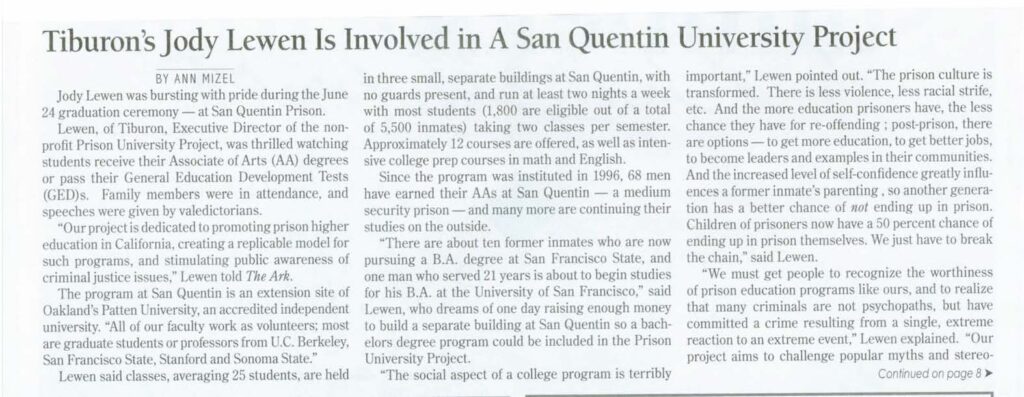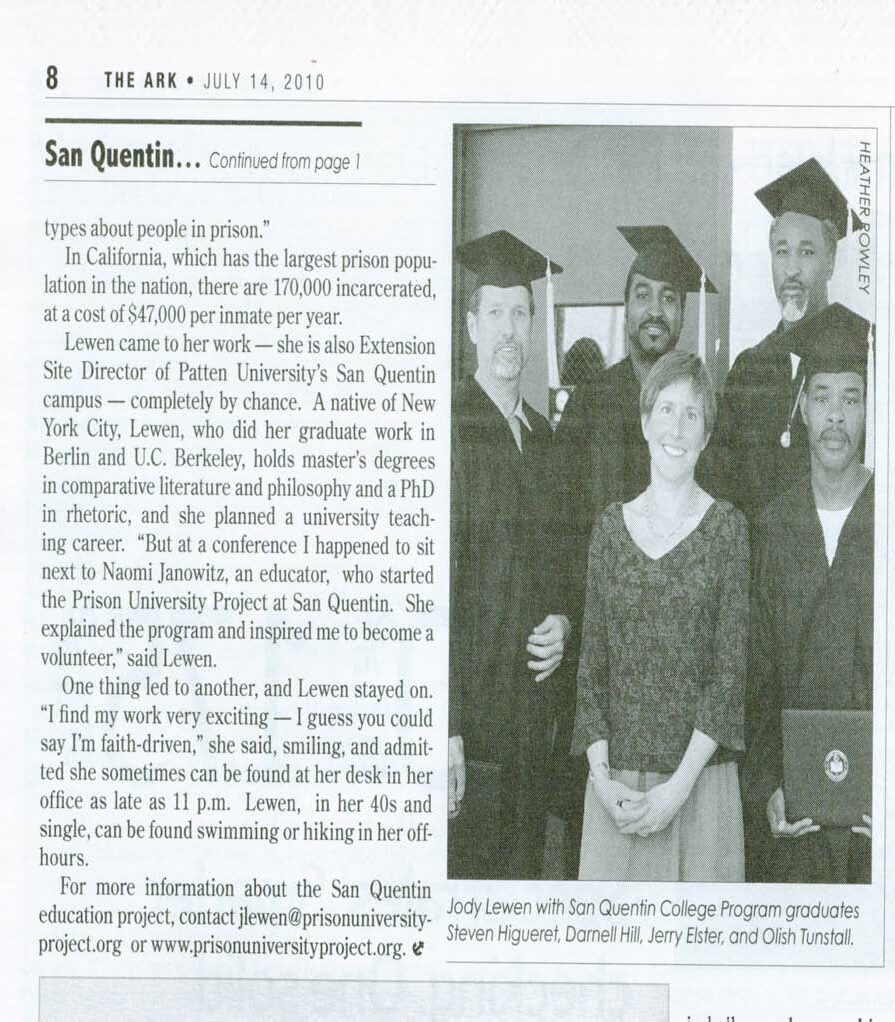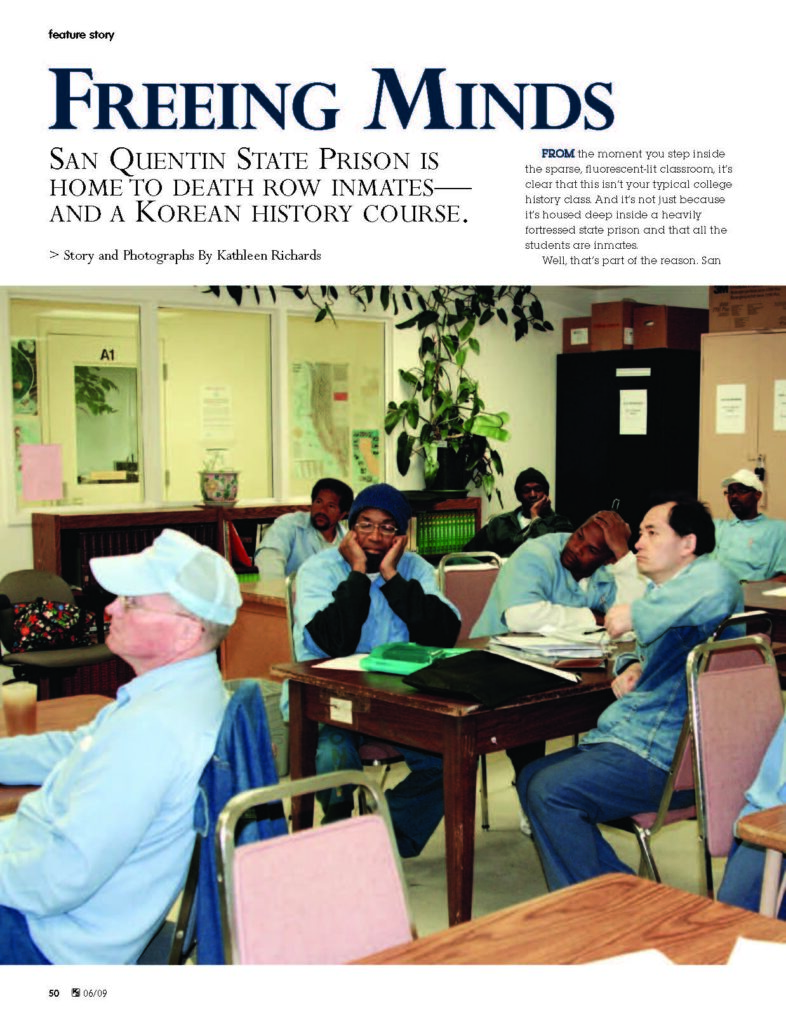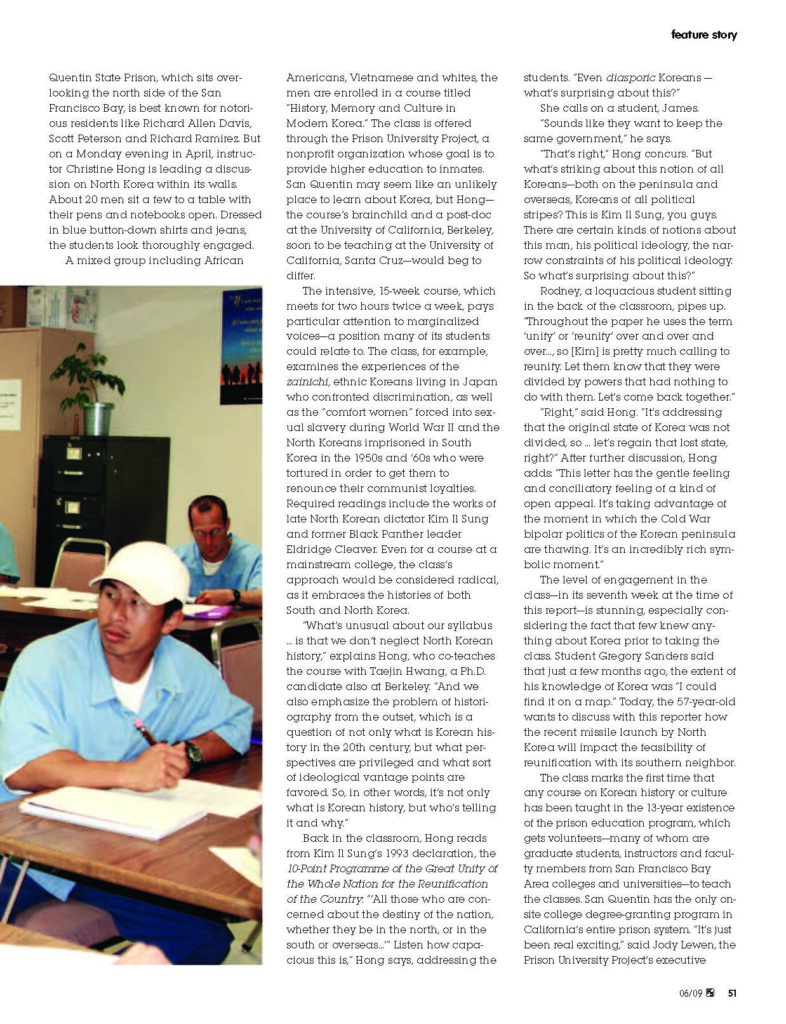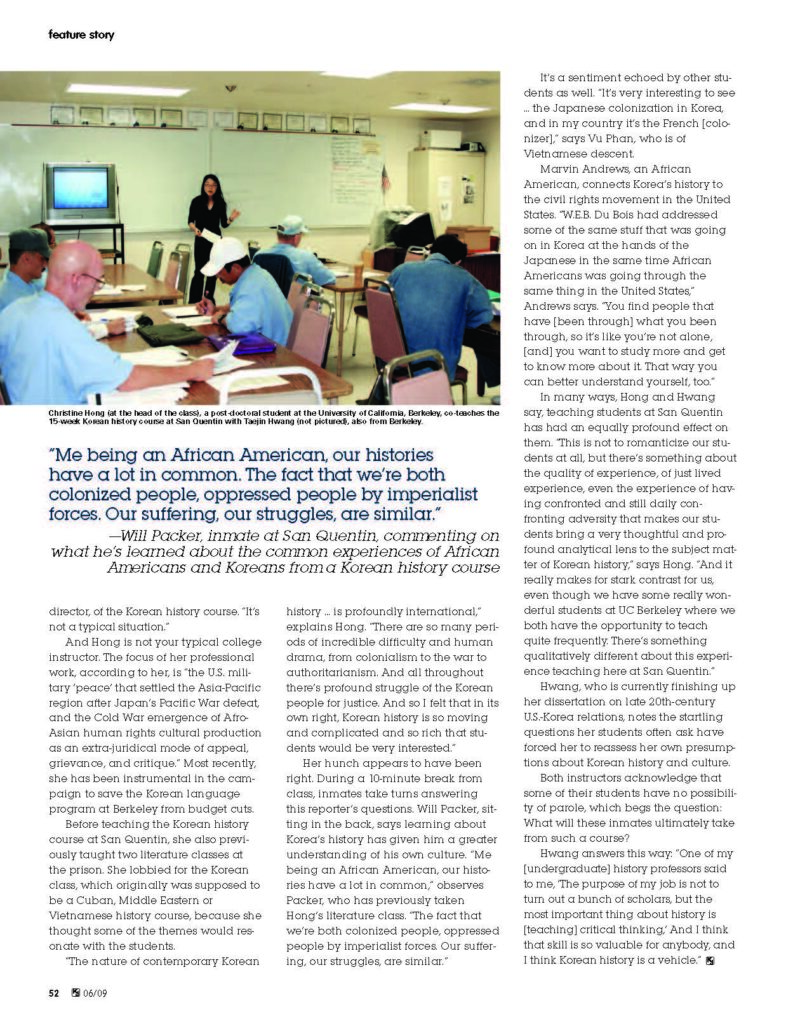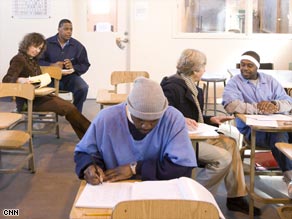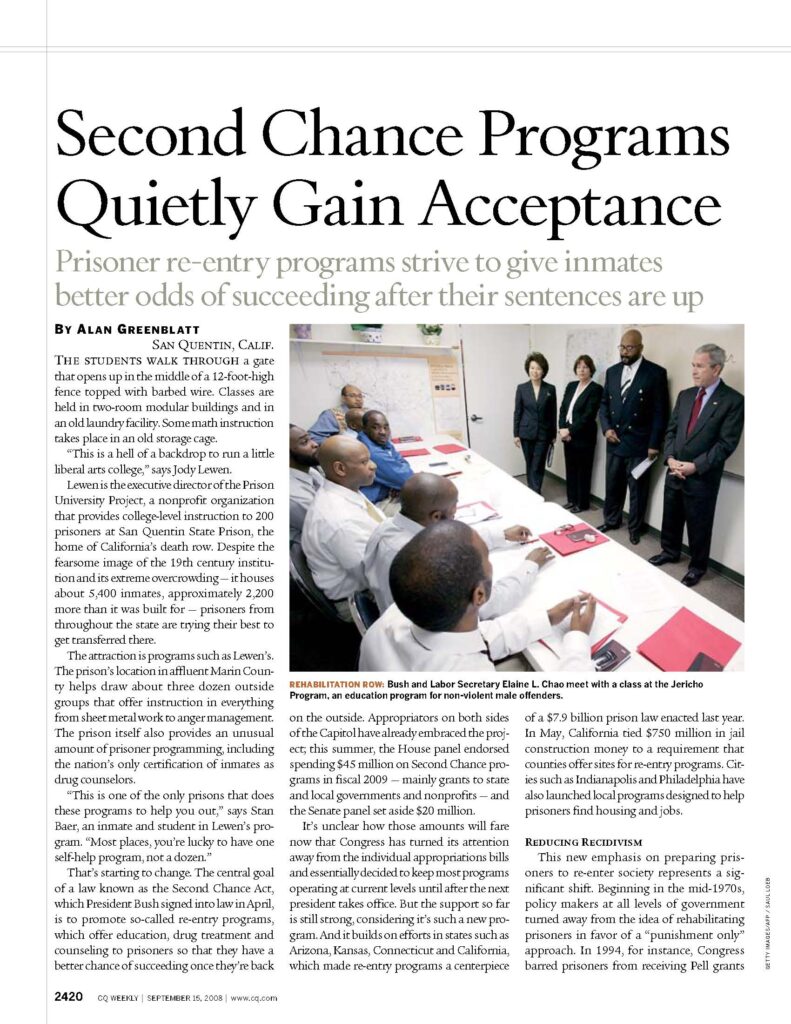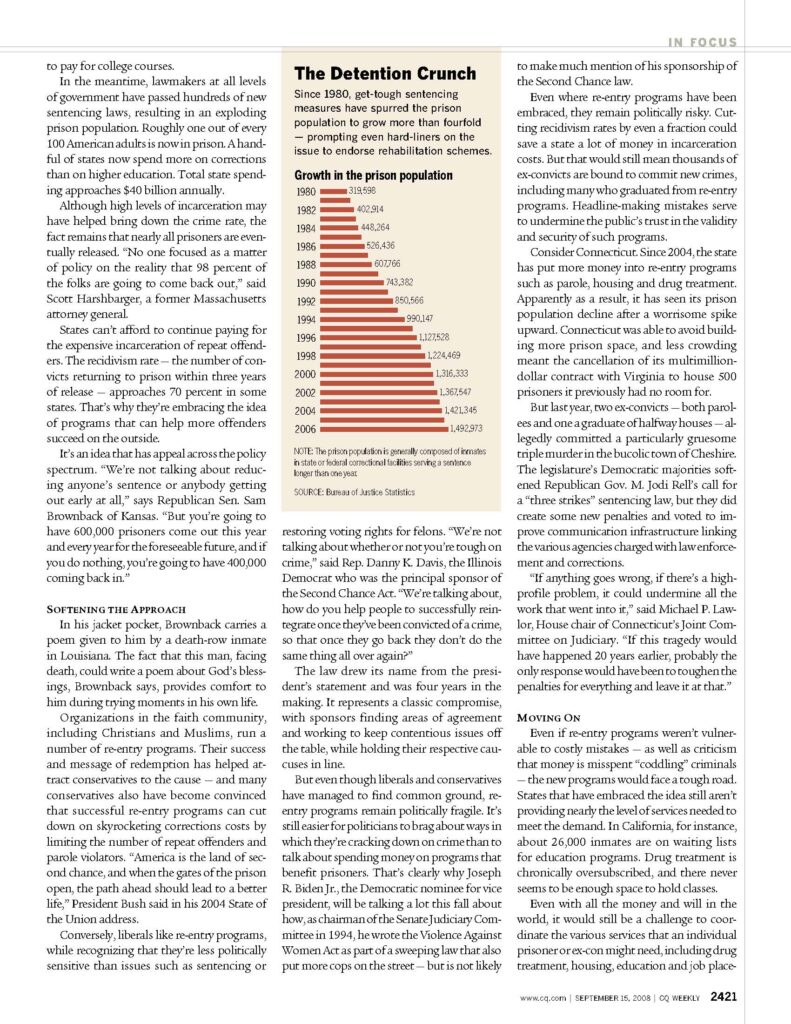Trying to get a better understanding of California prisons, 10 Stanford students are teaching and learning with a group of 20 inmates at San Quentin. They’re covering topics ranging from the history and culture of the state’s prisons to the relevance of Franz Kafka’s writings in the context of America’s penal system.
When Philip Senegal considers the 21 years and seven months he’s served in San Quentin since his murder conviction, he can’t help but think his time behind bars will one day come to an end. Although his parole was recently denied, he’s banking on another shot at freedom in seven years – the next time he’ll be allowed to make his case to the parole board.
So he had a keen interest in the class he was taking on a recent Sunday – a discussion led by Stanford students on parole policies. Eager to talk about how state and federal judges have weighed in on the issue, he also wanted the students to walk away with an understanding of his personal experience.
“There are a lot of intricacies to how the system works,” said Senegal, who is 43. “And you don’t understand them just by studying things on the outside. If you don’t come inside and see what’s going on, then you’re just uninformed.”

Getting that inside perspective is at the heart of the Stanford Prison Forum, an interdisciplinary workshop organized by Stanford Law School students Sara Mayeux and Maggie Filler and supported by the Criminal Justice Center and the vice provost for graduate education.
“We need more tools to understand prisons and issues like recidivism than just studying the legal system,” Filler said. “In law school, you look at things from the legal perspective – which is whether someone is guilty or not. I’m more interested in what happens once someone is in prison, and learning directly from people who are serving time makes sense. But once they’re in, they’re invisible for the most part.”
In a classroom inside a modular building next to San Quentin’s sprawling exercise yard, 10 Stanford students pursuing degrees in law, psychology, history and modern thought and literature have spent their Sunday afternoons this quarter studying, debating and learning with 20 inmates.
“We wanted to bring in perspectives from a range of different disciplines so students could see how criminal justice might intersect with their fields,” said Mayeux, who is a doctoral student in history as well as a law student. “People who are interested in studying prisons usually get boxed in as sociologists or criminologists, and there’s not a lot of thought about how disciplines like history and English can offer an important dimension when you’re talking about prisons.”
Led by different Stanford students each week, the group has covered topics ranging from the history and culture of California’s prisons to the relevance of Franz Kafka’s writings in the context of America’s penal system. The inmates prepare for the lessons by reading handouts and thinking about questions posed on the syllabus.
By the time the course ends in March, participants will have examined how incarceration affects families, what’s at stake by privatizing prisons and what’s been learned from psychological studies on conformity and obedience.
“Studying with prisoners will undoubtedly shape how the Stanford students think about issues like our criminal justice system, race and poverty,” said Debbie Mukamal, executive director of the Criminal Justice Center. “And experience shows that higher education transforms the lives of prisoners both while they’re incarcerated and when they get released.”
The classes take place in a room that could be in any American school. Encyclopedias, dictionaries and pre-algebra textbooks fill the bookshelves, maps hang on the walls and a dry-erase board fills up with notes, diagrams and points being jotted down by the instructors.
There are no locks and bars in the room. But outside the window, a guard tower and high fences topped with rolls of razor wire are constant reminders that this is a prison, not a college campus. Plans for the three-hour classes are sometimes interrupted: One was recently cut short when a guard ordered the inmates back to their cells for a head count.
But whether all 20 inmates show up or only one can make it, the classes are filled with give-and-take. During a recent conversation about a U.S. Supreme Court decision on parole rights, Filler – who led the class with fellow law student Alex Lampert – told the inmates she wanted to give them a taste of what it’s like to be in law school.

“Sometimes, professors will just call on you from out of the blue and ask for details of a case,” she told the class.
“So what’s this case about?” Her question fell to Jeff Brooks, who is serving time for armed robbery.
“Looks like it was a class-action suit brought against the board of parole,” he said. From there, the discussion was filled with terms like “liberty interest,” “due process” and “indeterminate sentencing.”
For the inmates, this class is an extension of the formal education they’ve already had at San Quentin. The prison is now the only one in California that offers an accredited college degree-granting program. The 20 prisoners have already received their associate’s degrees through the Prison University Project, a nonprofit organization that confers the two-year college degrees as an extension site of Patten University in Oakland.
“They’ve gone as far as they can go with classes,” Filler said. “This is sort of like graduate school.”
But the point isn’t to simply give prisoners activities meant to make their stays at San Quentin easier. Filler and Mayeux are also focused on the rehabilitation role of the prison system, and are hoping this course will make a difference when – and if – the inmates are released, by placing an emphasis on continuing education and building relationships, while building a sense of their own self-worth.
“People don’t realize that 90 percent of those who go to prison come out,” Mayeux said. “If you haven’t been thinking about them while they’re in prison, it’s not like you’re guaranteed to never see them again. They haven’t been banished from humanity, and you have to prepare for them to come back into society.”
Attribution: This article originally appeared in Stanford News on February 17, 2011. Read Story
Please note that the Prison University Project became Mount Tamalpais College in September 2020.
